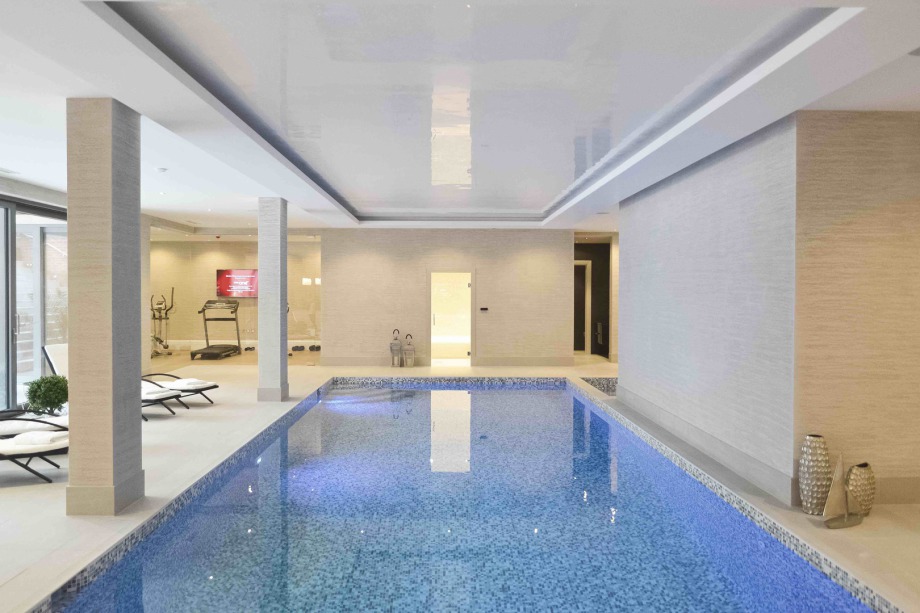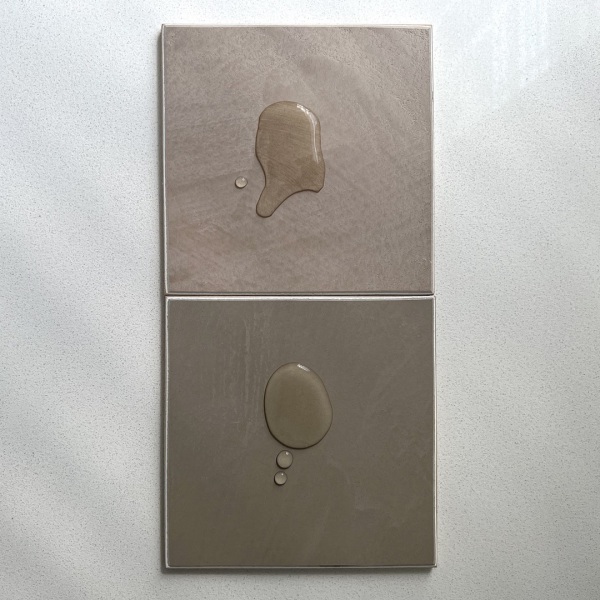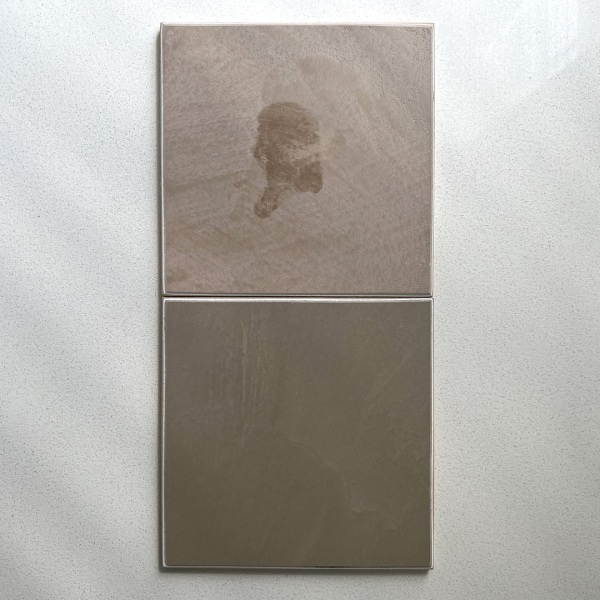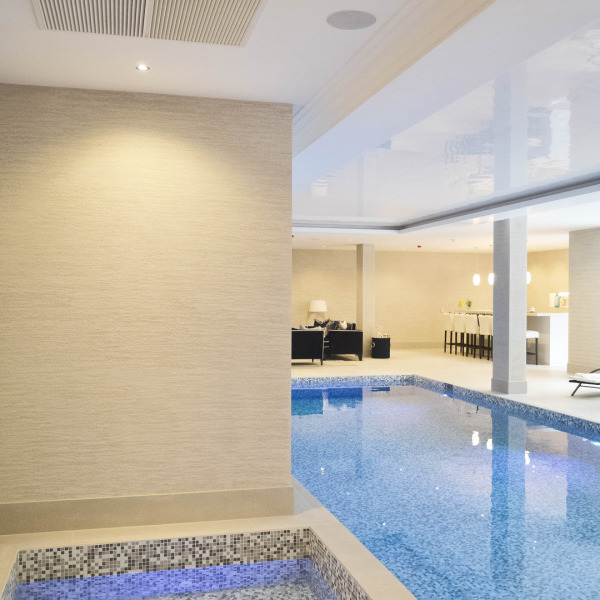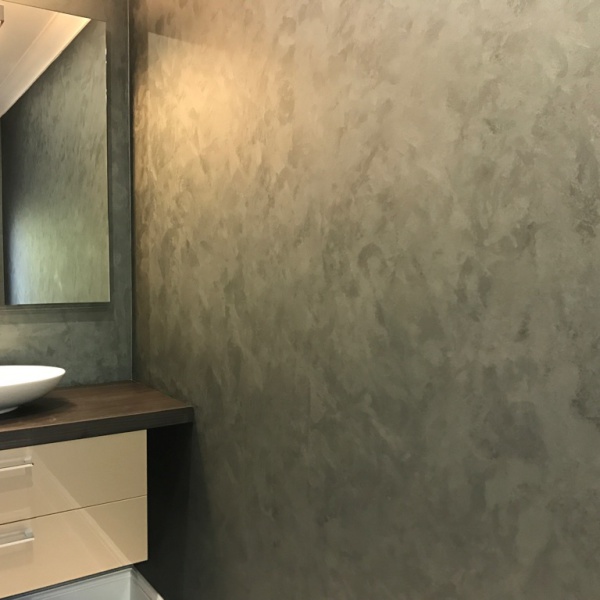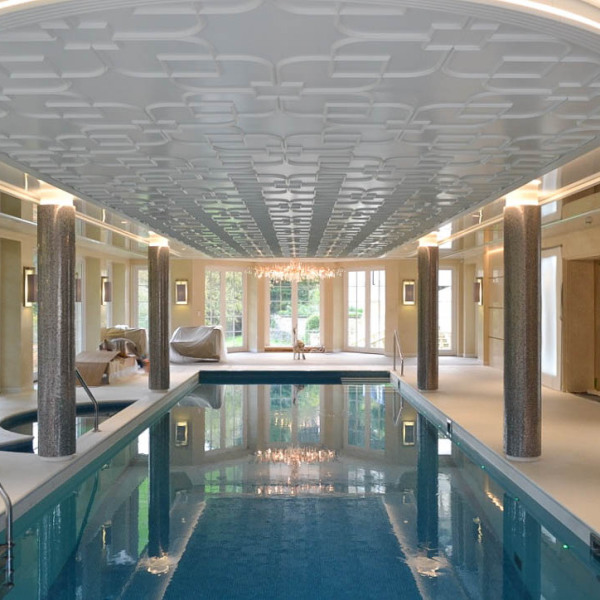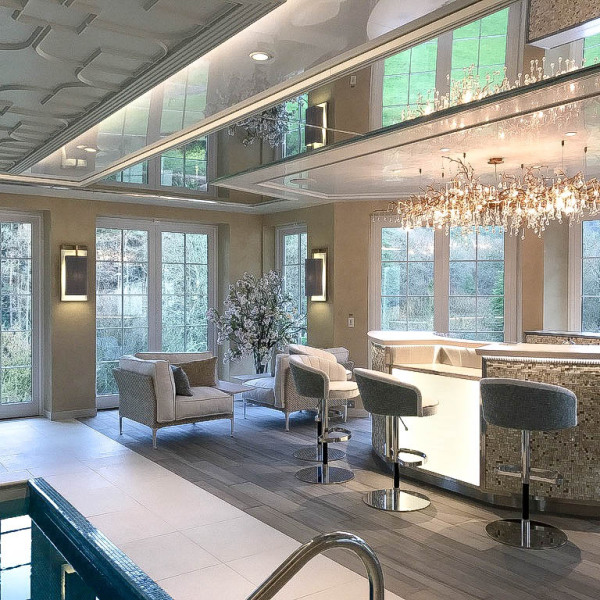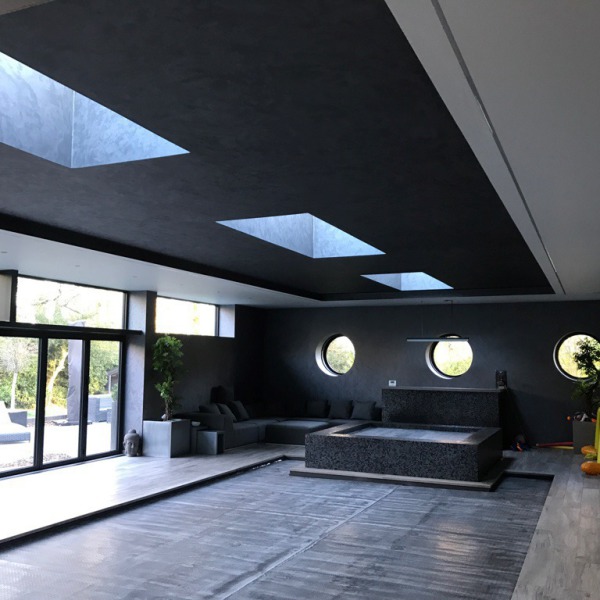Is Polished Plaster Waterproof? Is Venetian plaster suitable for the bathroom? Can you put Venetian plaster in a shower?
- Venetian Plaster is not waterproof, however steps can be taken to create a water resistant finish
- Venetian Plaster can still be a great choice for damp or humid areas due to it’s high alkalinity
- The high alkalinity of the limestone means Venetian Plaster can help deter mould and bacteria growth in humid environments
- Venetian Plaster can be installed in wet environments such as bathrooms, as long as it is not installed in areas which will come into regular and direct contact with water
Is Polished Plaster Waterproof? The short answer is NO but this doesnt mean it cannot be incorporated into swimming pool, spa or bathroom designs, it just needs to be specified correctly.
Venetian plaster can be made water resistant by using topical sealers which are applied to the plasters surface but not totally waterproof. So in short if you are looking to apply Venetian plaster into a shower enclosure or similar where large amounts of water will be constantly hitting the plasters surface it is a strong NO. If you are looking to apply Venetian Polished plaster close to a sink or swimming pool where occassional splashing may occur it is a YES but there are some guidelines to follow. We will talk you through these guidelines in this post along with why Venetian plaster isn't waterproof and alternative products to consider to wet areas.
We will also showcase some of our past applications in wet areas to inspire your next project.
Why Isn't Polished Plaster Waterproof?
Why isn't Polished Plaster waterproof? Venetian polished plaster in an un sealed / un waxed state will be incredibly porous, just like natural stone. Some finishes are more porous than others. The general rule is, the more textured the finish, (Pitted, Granito, Dragged) the more porous and absorbant it will be. The smoother the finish, (Marmorino Spatula, Marmorino, Smooth Stucco) the less porous it will be. All of these Venetian Plaster finishes can be reviewed in more detail in our blog post, "What does polished plaster look like?". Now, it's common knowledge that waxes and sealers are applied to Venetian plasters to help with this issue and provide them with protection from marking and soiling, these intern enhance the shine of certain finishes.
Once Waxed or sealed Venetian plaster finishes can be low maintenance and provide a wipeable and cleanable surface but still not a waterproof one. Where extra protection is required from water splashing, additional sealers can be applied to the polished plaster prior to waxes then being applied. This then makes them safe to use around areas which may be occassionally splashed or heavy traffic areas.
The main ingredient used in Venetian plaster materials is lime. Lime, is a natural building material that enables the plaster to be a 'breathable' wall finish once applied, creating breathable walls.. this is one of the main benefits of using polished plaster.. hopefully by now it is becoming clearer as to why it is not recommended as a waterproof finish.
Below you can see examples of our Marmorino finish waxed for normal useage and then with additional sealers applied to make the finish splash proof for wet environments.
It is important to note that if the water was left on both samples for a longer period of time it would eventually penetrate both sample equally. We simply slow the process down by applying additonal sealers. The same way the water penetrates the surface it then intern evaporates out again leaving no trace due the the breathable qualities of the lime but if large amounts of water were to be poured onto the plaster samples it would damage and darken the finish making it irrepairable - hence why polished plaster isn't waterproof.
Is Venetian Polished Plaster Appropriate For Wet Environments?
Is Venetian Polished plaster appropriate for wet environments? The answer is YES. Due to the lime-based materials which are breathable and high in alkaline, this makes venetian plaster a great choice for wet environments. The high alkaline levels help deter mould and bacteria growth which could occur in damp humid environments.
We have worked on a vast array of projects that have included wet environments, such as bathrooms, swimming pool areas and spas. There are simple but important guidelines to follow when looking into using venetian plaster in such areas such as distances from water sources such as swimming pools, hot tubs etc. Other important guidelines include having a waterseal along floor-wall junction in order to prevent any rising damp and having correct ventilation systems in place.
For a more detailed document containing all the technical advice required when specifying a polished plaster for a wet environment please email us. info@marmoplastering.co.uk
Benefits Of Using Polished Plaster In Wet Environments
There are many benefits as to why polished plaster should be considered in wet environments, we have listed the main benefits below:
- A wide range of finishes and colours to tie in with any design style.
- Breathable.
- Resistant to mould and bacteria build ups.
- A more cost effective alternative to natural stones, marbles etc.
- Light weight wall/ceiling finish, allowing large ceiling features to be incorporated into designs.
- Durable and easy to maintain.
- Can add the feeling of warmth with textured finishes.
- No joint or grout lines.
Previous Venetian Plaster Projects
Conclusion
To conclude: Venetian plaster isn't waterproof but it's not all bad news, as we have explained in this post polished plaster can be made water resistant and there are many ways that Venetian plaster can be utilised in wet environments as well as many benefits for doing so.

